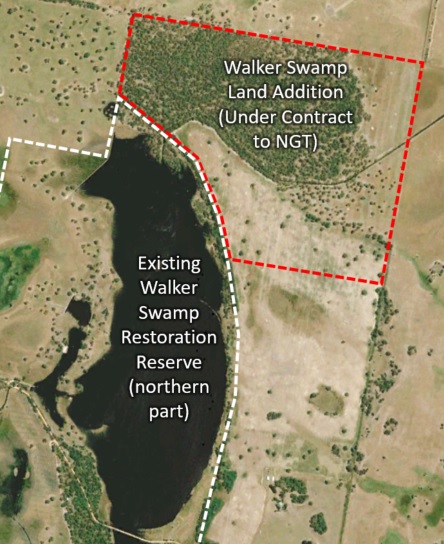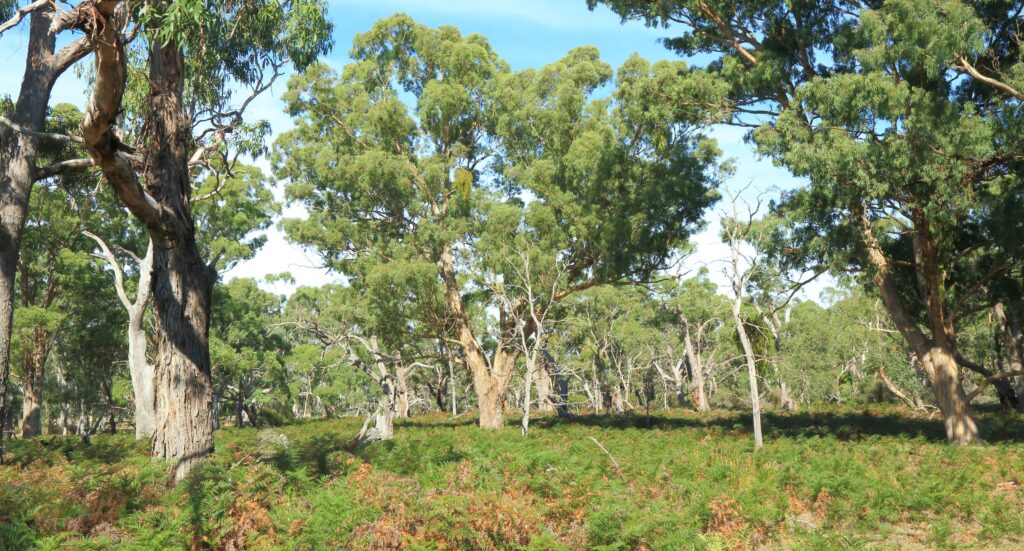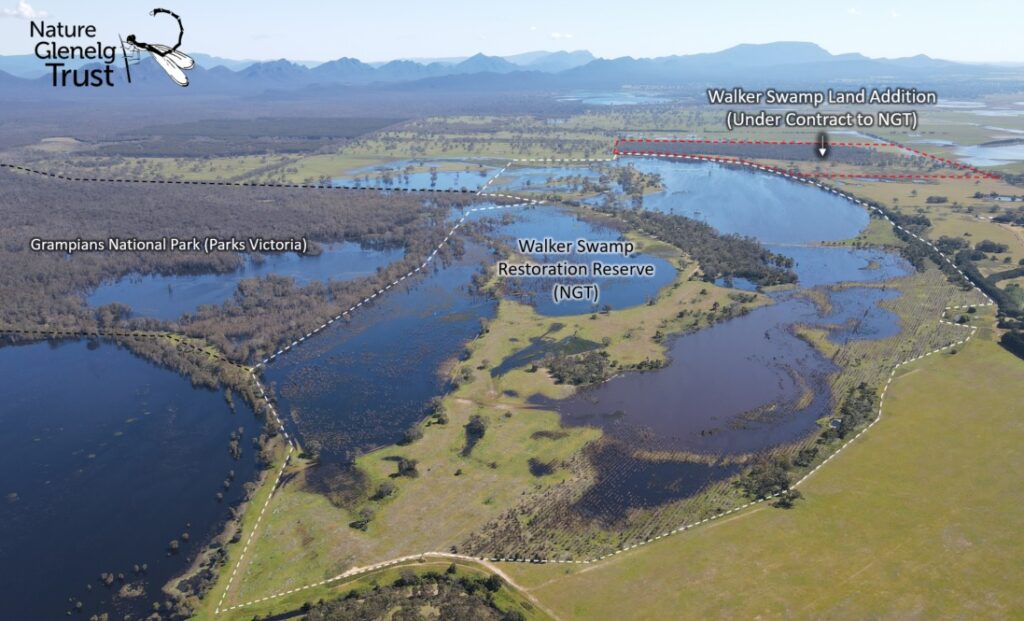Big breaking news this month! With your help, we can expand the Walker Swamp Restoration Reserve by almost 400 acres
After a busy few weeks behind the scenes we are delighted to announce that just over a week ago Nature Glenelg Trust signed a contract giving us the opportunity to expand the Walker Swamp Restoration Reserve by 390 acres (see the adjacent map).
To briefly recap – if you are not aware of the back-story – Walker Swamp is one of NGT’s premier wetland restoration sites, and became our first wetland reserve in Victoria when the project was announced back in 2018 (see here for the original announcement). After doubling the original project area and paying off the land purchase debt, our focus over the past few years has been on restoration activities, education programs and involving the community in the site. Along the way we have had some great media interest, incredible volunteer support and – most importantly – spectacular on-ground results. For a general overview of the project to date, please refer to this pdf from our 10th Anniversary community event last year.
The additional 390-acre area, which lies adjacent to the northern end of Walker Swamp, has been farmed since European colonisation and roughly consists of half remnant vegetation / half cleared land.
The cleared portion of this area was later converted to Blue Gum plantation at the same time that Walker Swamp itself was planted with Blue Gums in approximately 2005. This plantation was harvested around 2017, with the stumps then removed by the new owners who converted it back to grazing land after the property was sold in mid-2017. The image below shows one of the previous plantation areas, which now provides an exciting woodland restoration opportunity.
The patch of remnant vegetation however was never cleared and consists predominantly of threatened Manna Gum sand forest on the elevated lunette bank adjacent to Walker Swamp. The area retains some magnificent trees and a higher quality of remnant woodland vegetation than presently occurs anywhere within the existing NGT Reserve.
The remnant bushland area appears to have been offered some inadvertent extra protection from historic clearance and more intensive grazing, by being situated on the northern side of the steeply banked northern Bunnugal Drain, which was constructed approximately 80 years ago (and is now one of the primary water sources for Walker Swamp). This ‘protection’ may have come about because the area was on the ‘far side’ of the drain, which lacks practical access from a farming perspective – i.e. the rest of the former farming property, including all of the land that had been cleared for more intensive agriculture, is on the south side of the drain.
Over the next couple of months as we provide updates on the progress of this fundraiser, we will also share some additional insights into this area, including its bird-life, our future plans and how the land addition will complement our efforts to restore the environmental values of the wider landscape in this south-eastern corner of the southern Grampians. So stay tuned for more information!
But for now, and in summary, here are the key details for this project:
Land size: 158 hectares (390 acres)
Funding target: $500,000
Settlement date: 30th June 2023
Over the coming weeks, we have an initial pool of funds available to enable donations to be matched, dollar for dollar, to double the impact of your donation and help us more rapidly reach the target. Needless to say, with settlement set for the 30th June 2023, now is the time when we could really use your help !
All donations over $2 are fully tax-deductible.
For more information on how to donate, please visit this page or click the link below.






